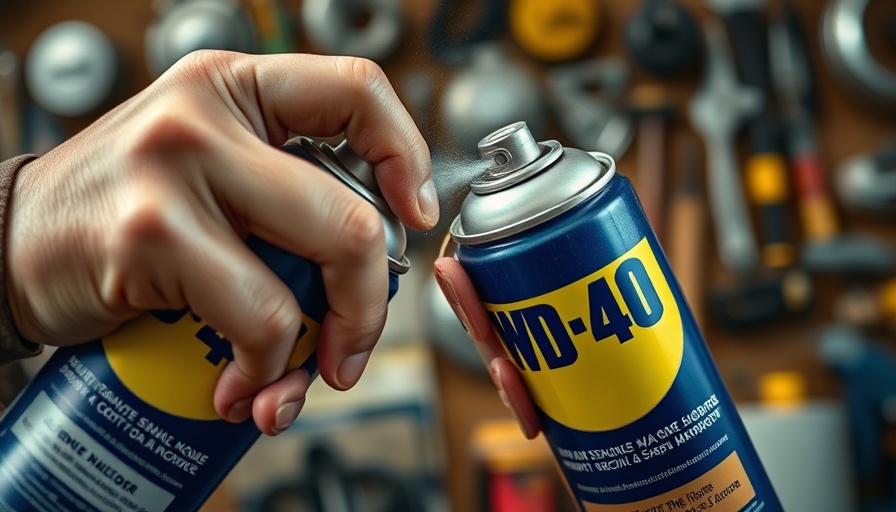
Why WD-40 Is a Must-Have in Every Home
WD-40 is often viewed as a miracle solution for squeaky hinges and rusted bolts, but its versatility extends far beyond basic maintenance tasks. From cleaning to DIY projects, this multi-functional spray can become your new best friend around the house. The series of ingenious applications for WD-40 is not only an impressive feat of engineering but also a delightful way to simplify daily chores.
Historical Context: The Story Behind WD-40
First introduced in 1953, WD-40 was originally developed to prevent rust and corrosion on missile parts for the aerospace industry. The name stands for "Water Displacement, 40th Formula," reflecting the countless iterations it took to create this now household staple. Today, it has transitioned from a workshop tool to a household name, thanks to its proven effectiveness for a variety of problems.
WD-40 as a Cleaning Solution
Cleaning enthusiasts have found WD-40 to be surprisingly effective on tough stains. Got gooey tape residue on your favorite vinyl records? A light spray of WD-40 followed by a gentle rub can bring them back to life. It's also adept at removing crayon marks from walls, car sap from paint jobs, and even grease stains from fabric. Just remember, always test the spray on a small, inconspicuous area first!
Practical Insights: 14 Creative Uses for WD-40
1. Remove Stains: Spritz it on fabrics as a pre-treatment for tough stains. 2. Clean Grease: Apply to cooking surfaces for an easier cleanup. 3. Unstick Zippers: Spray on troublesome zippers for smooth operation. 4. Restore Tools: WD-40 can help revitalize rusty tools in a snap. 5. Protect Garden Tools: A quick spray helps prevent rust and wear on gardening equipment. 6. Prevent Squeaks: Use it on squeaky door hinges, of course! 7. Condition Wood: Apply to wooden furniture to keep it looking fresh. 8. Shine Silver: A little WD-40 on a cloth can make silver items sparkle. 9. Remove Fingerprints: Works wonders on stainless steel appliances. 10. Loosen Bolts: Spray on to help free seized bolts. 11. Easy Release: Use it as a lubricant for bike chains. 12. Smudge-Free Glass: Spray on mirrors for a streak-free shine. 13. Deodorize: Eliminate odors from sports equipment and shoes. 14. Protect from Rust: Use it to coat tools and prevent corrosion.
Tips to Maximize Your Use of WD-40
While WD-40 may seem like a panacea, it’s important to use it wisely. Always ensure good ventilation when applying it indoors and avoid spraying it on food prep surfaces. There are many eco-friendly alternatives available if you're looking for a greener option, but if you’re in a pinch, WD-40 can be your go-to product that’s often just a spray away.
Future Predictions: The Versatile Future of WD-40
As households continue to embrace multi-functional products, WD-40 is likely to expand beyond its traditional market. The rise of smart technology means more gadgets could utilize similar formulations designed for various applications, adding convenience and efficiency to everyday household tasks. Imagine a future where your smart home can automatically apply WD-40 to squeaky doors or malfunctioning gadgets!
In conclusion, WD-40 is more than a simple lubricant; it’s a multifunctional ally that can assist with cleaning, maintenance, and even DIY projects. Whether you're tackling a tough stain, keeping your tools in shape, or looking for a quick fix around the house, remembering to keep a can of WD-40 nearby might just save the day. It's time to break out that can and start exploring its vast range of applications!
 Add Row
Add Row  Add
Add 



Write A Comment